How Do Banyan Trees Grow After Planting Them?
Planted banyan trees grow out to be huge in size with unique aerial roots hanging down from the branches which further go underground to support the tree size. They thrive in well-drained sandy loam soils with ample space to spread.
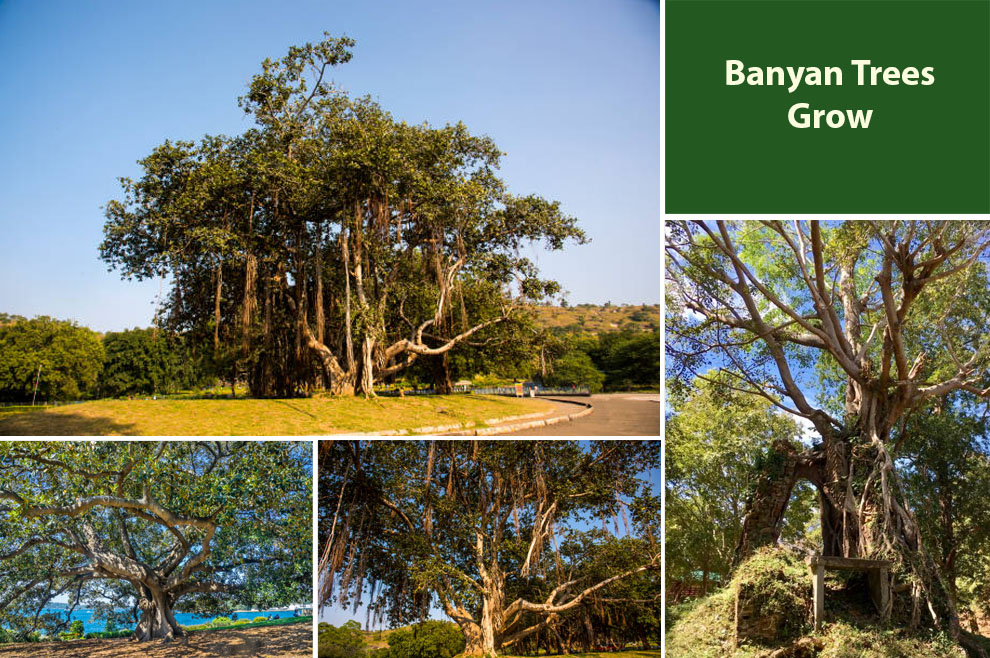
When growing in a natural setting, banyan draws all attention to its attractive colonies and aerial roots. However, you can appreciate the beauty of its foliage in a room. It is proudly considered one of the most colorful species in terms of foliage.
Even though quite large, these trees look very unique. It is quite a sight to view how do banyan trees grow because of their unusual aerial roots.
It is a low-maintenance plant with simple care requirements. The tree grows in the wild as a fascinating asexual community with its horizontal branches that develop several aerial root systems drooping down to form unique silhouettes. They need full sun, sandy loam soil, frequent watering till the roots establish, and sufficient space to thrive.
In nature, its aerial roots cascade overshoots. The plant’s aerial roots show different behavior in an indoor setting. So, this legendary specimen tree can be recreated as a bonsai where the maximum size is 10 feet.
The Banyan tree, known as the Ficus benghalensis, is one of the most popular members of the Ficus genus in the mulberry family. It is a versatile and large species but can be grown as a houseplant. It transforms and develops with age, but not by enormous proportions.
Many even refer to it as the Indian banyan or the banyan fig. In India, the plant is considered sacred and is regarded as one of the most valuable species on the earth.
Banyan is an odd-looking plant with widespread, aerial roots with several trunks. It grows up to 100 feet tall and takes up many acres of land in its native land of Asia and India. Given the surprisingly massive size, how does a banyan tree grow?
The plant requires a mild temperature around the year and is typically grown as a houseplant or a patio. You can grow it indoors or outdoors until the colder weather arrives. You can leave your plant outdoors around the year in USDA hardiness zones ten through twelve.
Banyan Tree Description and Overview
| Scientific name | Ficus benghalensis |
| Family | Mulberry |
| Native to | India and Pakistan |
| Tree size | Up to 100 feet (30 m) |
| Lifespan | 200 to 500 years |
| Leaves | Leathery, thick leaves with green to olive hues |
| Bark | Thick and white colored |
| Roots | Aerial roots above the ground that mature into trunks |
How To Grow Banyan Trees Outdoors At Home?
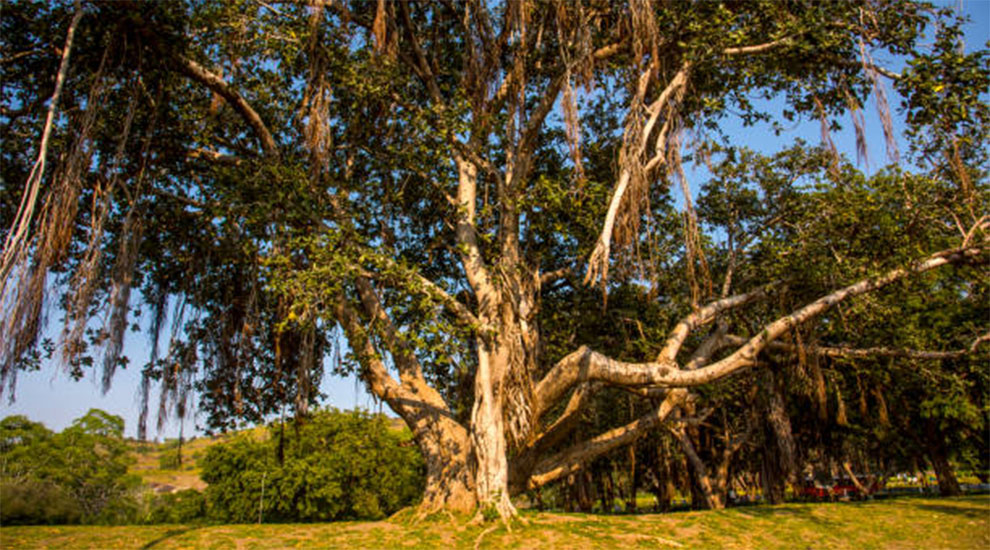
It can be challenging to grow the banyans. It is not like the oak tree variety that practically takes care of itself. So, from picking the right location to ensuring that the plant receives the right amount of fertilizer and water, you must exert good care toward your banyan tree for it to grow well. Here are the care instructions you must follow:
A. Water
Banyan is a fast-growing tree and demands ample moisture and water. You cannot do much about the moisture because the weather in your geography determines it but being careful with the plant’s watering schedule helps its growth. After the roots establish, you can reduce the watering, and the tree will adapt to the dry soil.
B. Location and spacing
Both location and space must be considered when planting a banyan tree. Choose a location with well-drained sandy loam soils. The tree can spread up to a few acres in the garden and grow up to 100 feet vertically.
When planting a banyan tree, ensure it is not close to the street or does not interfere with the driveway. Its lush canopy, which develops larger every year, can become an obstacle in your garden once the tree grows to its full size. Do not move the tree around.
It can result in leaf drops. So, be cautious when picking the place for the first time, as that might be its permanent place.
C. Fertilizer
You must fertilize the banyan trees once a year with a balanced fertilizer. Spread it evenly around the roots, ensuring it is away from the drip line. The chosen fertilizer must have an equal percentage of NPK. So, a 20-20-20 fertilizer is ideal for the best results.
D. Light
Banyan trees love the sun. So, if you do not have a spot in your garden that receives good sun, partial shade will also work well with the plant. However, the location should not be dark or completely shaded.
Fortunately, the plant’s height is a significant advantage. It allows it to tower the buildings and get access to its needed sunlight.
E. Frost
Frost is the biggest enemy of your banyan tree. Since the plant thrives in warmer conditions, it is not a good pick for all climates. You must grow banyan trees only in USDA hardiness zones 10 through 12.
Growing Banyan Tree Houseplant In A Pot
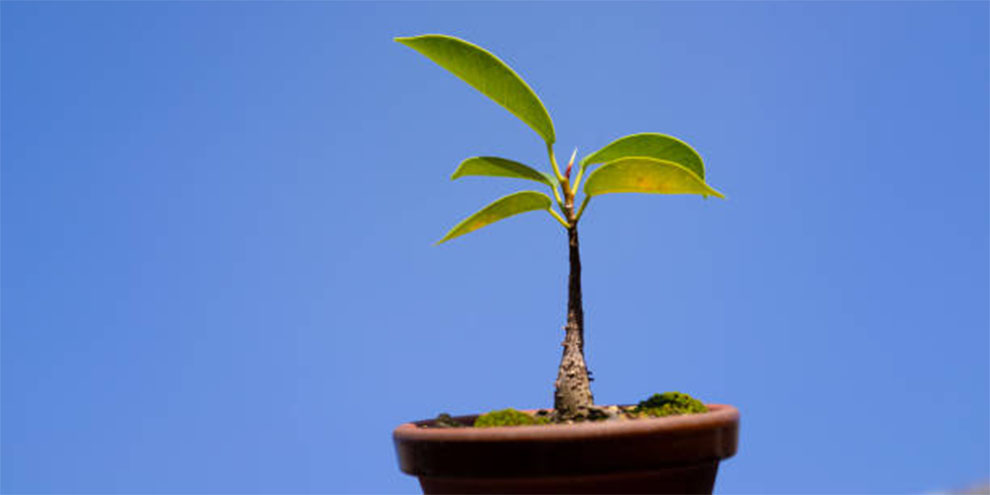
What should you do if you do not have the right weather conditions or the space to grow your banyan tree outdoors? Grow it indoors as a potted plant. How do banyan trees grow indoors?
In this case, you will plant the curtain fig, a popular specie from the Ficus family. It is native to China and grows up to forty feet in the wild. It is a beautiful ornamental tree with oblanceolate evergreen leaves that grow up to two inches and have a light gray bark.
Planting your potted banyan tree
Banyan tree grows well inside the home, but it likes dry and warm weather, unlike the outdoor growing Ficus benghalensisthat enjoys ample humidity. But, this bonsai will still require enough light.
So, you must move your plant near a window in the colder season. The plant’s soil should have a good mix of pumice stone, akadama, and potting soil in equal parts.
A. Water
Understanding the banyan tree’s watering requirements can be a little tricky. So, the best way to go about it is to monitor the soil in the pot. Consider watering the plant when the soil’s top half-inch goes dry.
However, do not use too much water. It can kill the roots. Ensure that the soil is evenly moist but not soggy. It is best to water it twice a week during summer and spring, as these are the seasons of growth.
B. Spraying
The potted banyan trees are sensitive to water. Thus, we recommend spraying the leaves gently with water. It will wash away the dust and give the plant a beautiful look. It is also necessary to avoid the archenemy, the red spider that nests on the tree and inflicts damage on the roots and leaves.
C. Pruning
Pruning is vital for the plant’s growth and good health. However, when trimming, please be judicious. Cut only the twigs and branches that stick along the trunk and out of the silhouette.
March to October is the ideal time to prune your bonsais. You can do it three times every year to maintain your plant’s shape and height. Some people like to retain the bonsai’s aerial roots because they develop into a mangrove-like appearance.
D. Fertilizing
Feeding is a crucial aspect of growing a banyan tree bonsai. The plant needs two kinds of fertilizer. When repotting and planting, you can feed it with a slow-release fertilizer, enough for its sustenance that doesn’t burn the roots. Next, you must use a good bonsai fertilizer from spring through fall.
E. Repotting
When the tree grows, it requires a bigger pot. You will have to repot the bonsai banyan once every three to four years. Consider repotting after winter before the spring’s growth starts. Please ensure that you gradually increase the pot size.
Terracotta pots with drilled bottoms are the best pick for the plant. Ensure that the new pot’s bottom layer comprises stone pebbles or clay balls for good drainage.
F. Propagating
Fortunately, propagating the banyan tree is seamless, and you can do it as and when you feel like it. When propagating, use the clean scissors that you employ while pruning. Examine the plant and chop a healthy branch at a forty-five-degree angle.
Eliminate all the leaves from the branch, barring four to five newer ones. Soak this branch in water and keep it in a warm place. After a few weeks, the branch will develop a root. When the root grows substantially, you can plant the new bonsai in a well-prepared pot.
Where Does A Banyan Tree Grow Best?
The banyan tree does not grow very well in colder climates. In America, it only flourishes in the south of Miami, Florida. However, its primary growth region continues to be India, which is also its birthplace.
Its leaves are large, four to eight inches long, and about three to six inches across. They are leathery, thick with an olive or greenish hue, and oval with smooth margins. The petiole is short and covered with fine hair. Older banyans grow aerial roots, which mature into thick trunks, and as the plant ages, it blends into the primary trunk.
How Does A Banyan Tree Grow From A Stem?
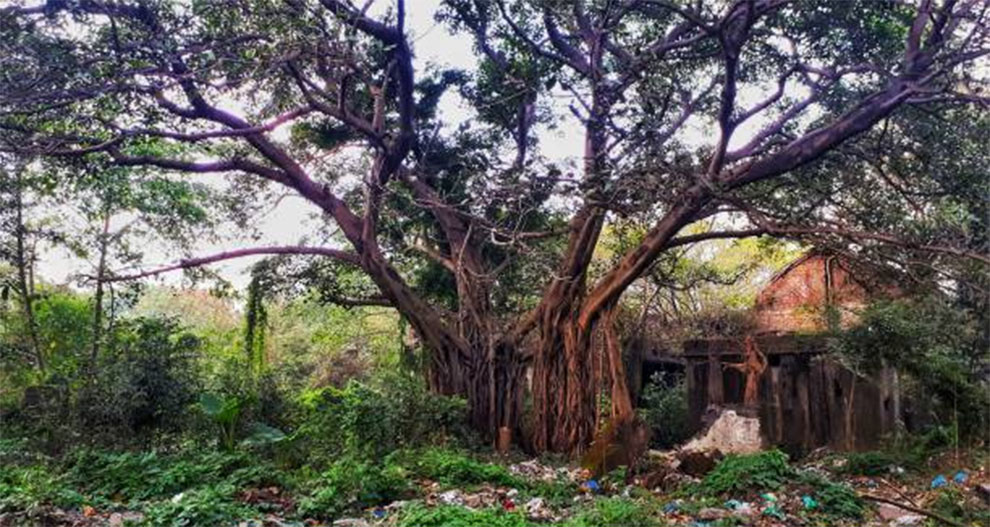
You can propagate the banyan tree from stems, but herein, you will follow a golden rule – The Pencil Rule. It states that the stem’s dimensions – height and thickness must be equivalent to that of a pencil. The item must have brown wood and must be woody and not green in color.
Here are the steps you need to follow to plant a banyan through the stem:
- Chop off a stem, and trim it from both sides.
- In a pot, add some manure and soil and plant this stem.
- Beyond the stem, you can also grow some companion plants. It will give the roots a company.
After you follow these three steps to the T, you will see your plant growing in three months. When picking the stem, ensure that it is not an old one. It must have a wooded part and be young with various nodes.
The best stems are those that have small leaves on the edge of the top. Do not pick a green stem. It is too young and won’t germinate. It is quintessential to ensure that the stem has nodes from where the roots will start growing and leaves germinate.
When you pick the correct stem, the rooting process is faster, and the leaves will start showing in no time.
Can Banyan Trees Grow From Aerial Roots?
We have assessed how to plant banyan trees. So, we know that the banyan tree grows solely from stem cuttings and seeds, meaning you cannot use the aerial roots to grow a banyan. However, these roots go underground and support the plant but have no role in propagation.
Some Uniquely Interesting Facts About The Banyan Tree
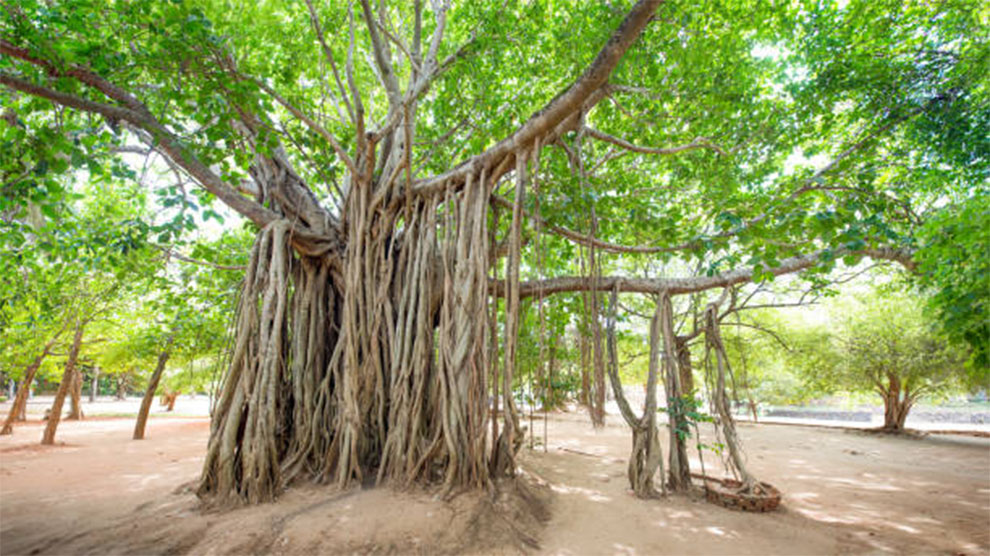
- Alexander the Great was the first European to set eyes on a banyan tree in 326 BC.
- The banyan is one of more than 750 fig trees, which are pollinated only by their own species of tiny wasps, which breed inside the figs of the partner trees.
- Banyan is the world’s biggest tree in the area they cover. The biggest banyan tree alive is in West Bengal’s Acharya Jagadish Chandra Bose Botanical garden.
- Banyan trees produce vast fig crops that sustain several species of fruit bats, birds, primates, and other creatures.
- Hindus believe that the banyan tree in Jyotisar is the one beneath which Krishna stood when he delivered the Bhagavad Gita sermon.
- Hawaii is famous for its banyans, but they are not native to the island.
- Banyan has been a popular source of medicine for 1000s of years. People in Nepal employ banyan’s roots, bark, and leaves to cure over 20 disorders.
- Despite their large size, growing a banyan tree from seeds is possile.
Related: Growing Japanese Magnolia Tree | Planting & Growing Weeping Willow Trees
More on Banyan Tree Information
Ques 1. How far do banyan tree roots spread?
Ans. The banyan tree grows up to 100 feet and can spread indefinitely laterally. Its aerial roots develop from the branches and take root in the soil to form a new trunk. So, unless you manually curtail the spread, it can expand anywhere.
Ques 2. Why does the banyan tree have roots above the ground?
Ans. The banyan trees have roots above the ground to support the heavy and giant plants. The root system underneath the soil is insufficient to cater to the bulky tree.
Ques 3. Why do banyan trees grow only in open places?
Ans. Banyans need more water and space. Hence, grow it in open spaces.
Banyan Tree Buying Guide
You must be careful to closely examine the plant to ensure it is healthy and free from pests and diseases before you bring it home. Also when using seeds to start the tree, make sure that the seeds are not too old.
